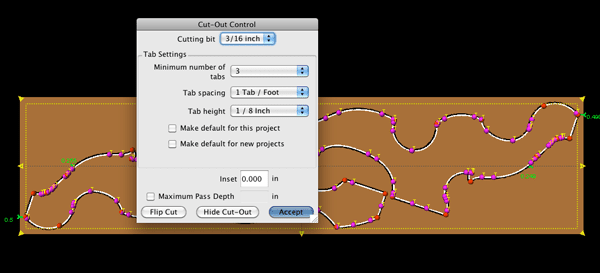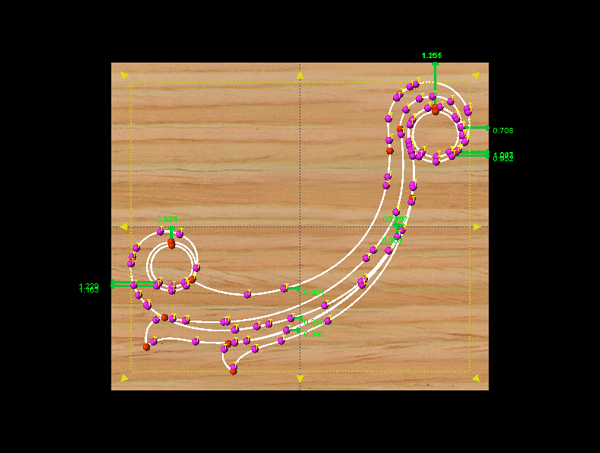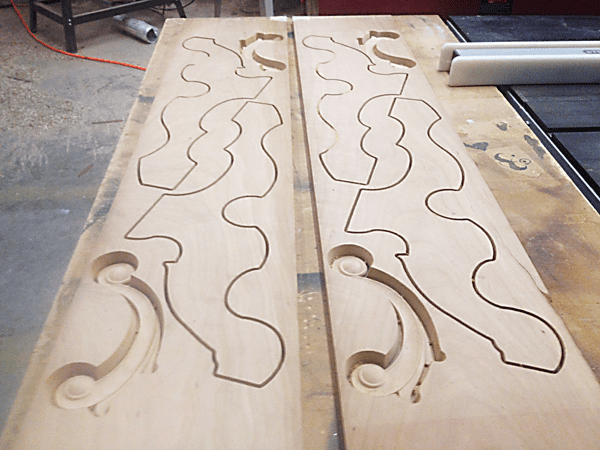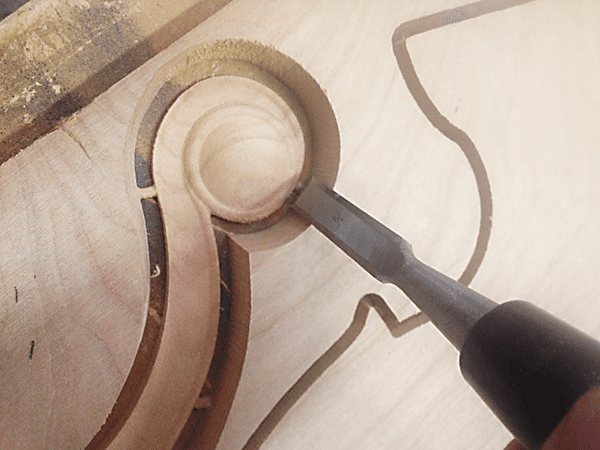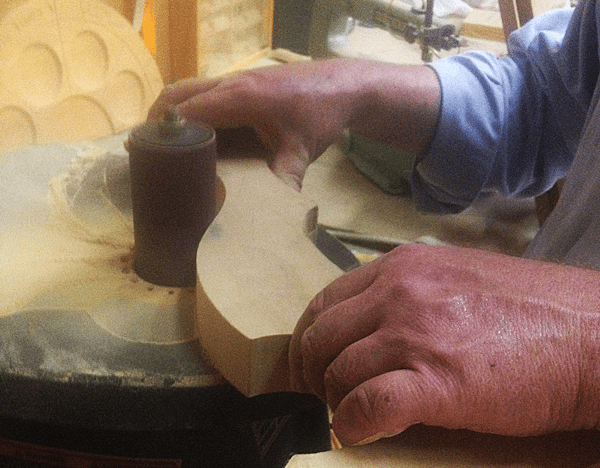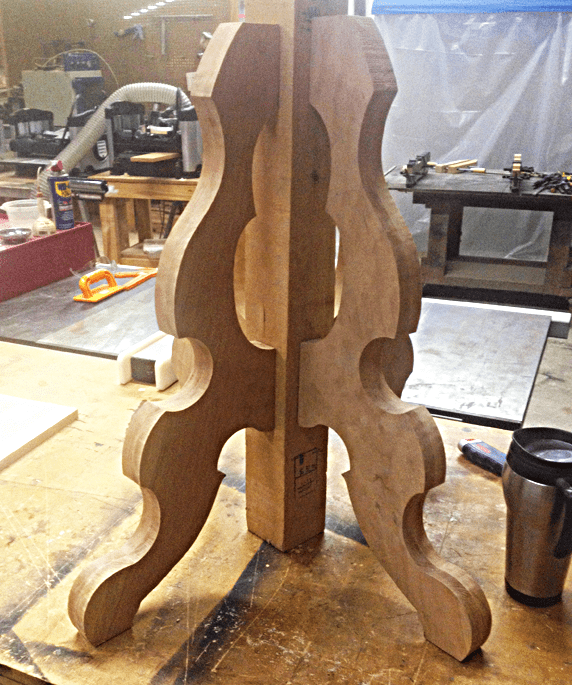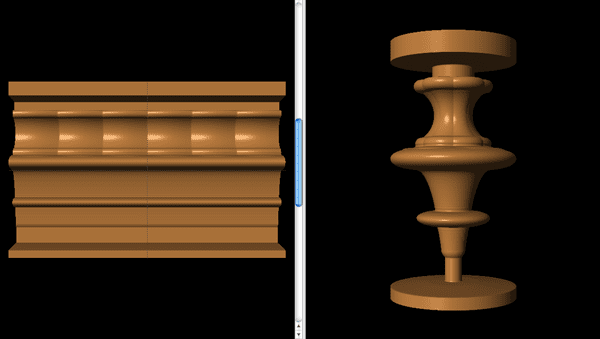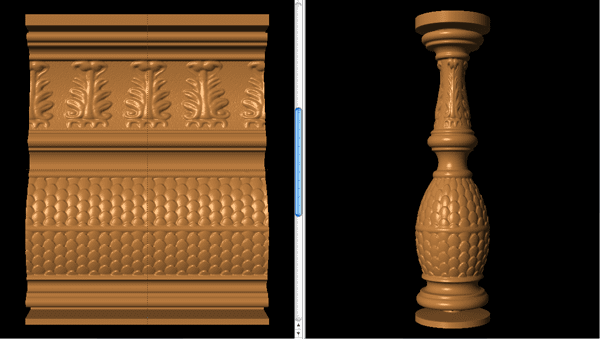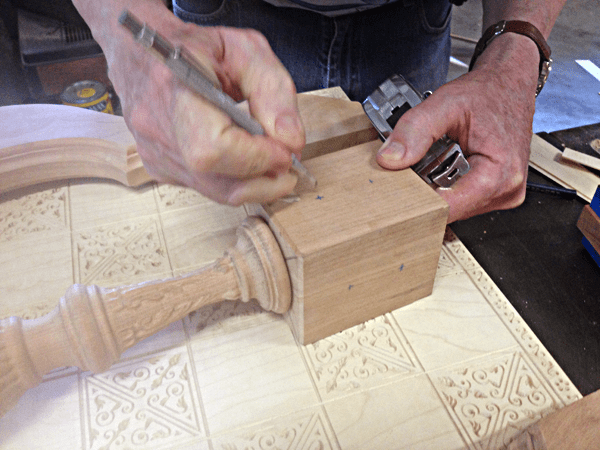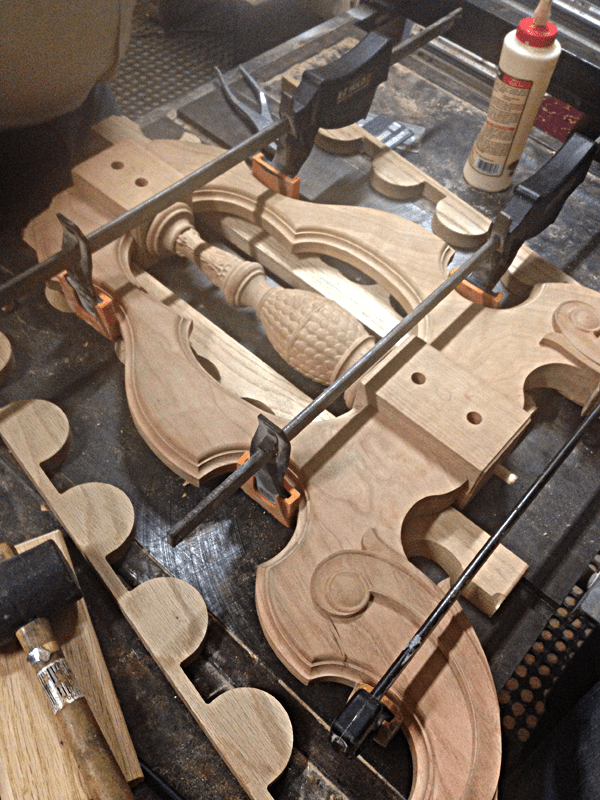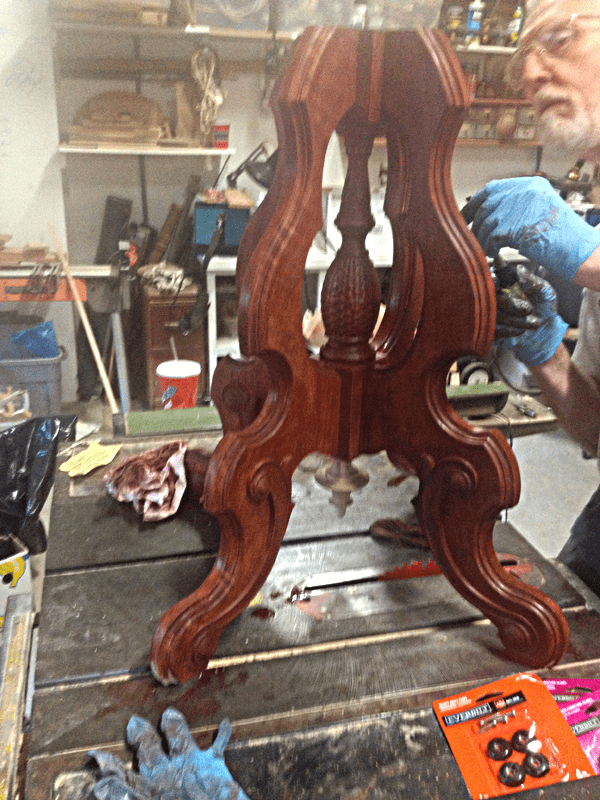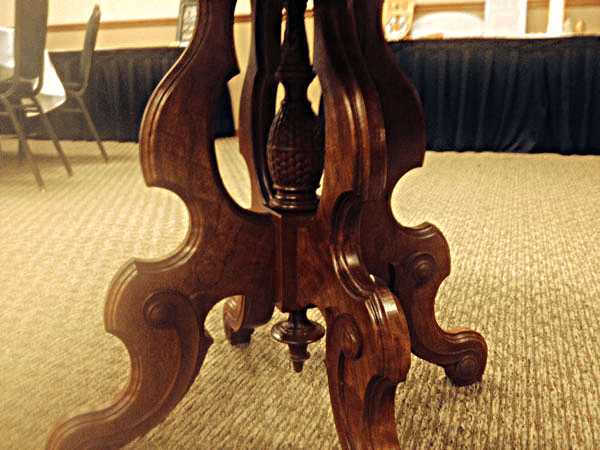Chess Table Part 3 – The Table Legs
This is part 3 of the Chess Table Project. Check out Part 1 and Part 2, if you haven’t yet. In part one, I covered the design and carving of the chess pieces and the idea stages of the table design. Part 2 discussed the process of designing, carving, and assembling the chess board for the table top. Now, I will be carving and building the legs to the table. These legs are almost entirely made with the CarveWright and are rather simple to do, but with stunning results.
In part one, I showed photos from my research of a style of leg that looked really elegant and immediately stood out to me as perfectly suited to be made with a CarveWright.
In my plans, I had drawn a leg profile based on this style and laid out a left and right version of it. Then, I exported it from Illustrator out as a DXF for importing into the CarveWright software.
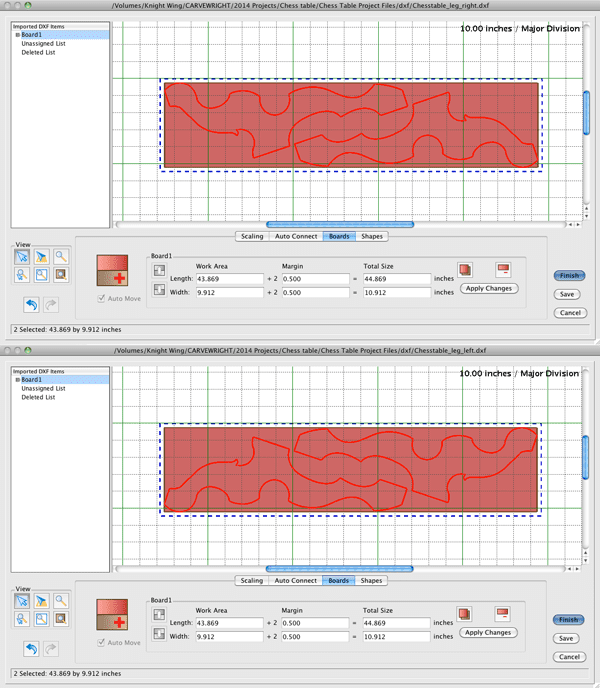
These legs will be glued together to achieve the desired thickness to give the legs a substantial look. Using the cut path tool , flip the cut to the outside of the line and select the 3/16″ cutting bit. The 3/16″ bit is preferred, due to the density and hardness of the cherry wood I’m using for this project.
Next, I need to create the decorative flourish onlay that will be on the sides of each leg. The brilliance of this design is it’s simplicity. By cutting the pieces separately and gluing it all together, I can minimize the amount of work the CarveWright machine has to do, and end up with a really nice finished piece.
The flourish onlay had been drawn in Illustrator and also saved as a DXF to import for use with the modeling tools.
The modeling on this design was pretty simple. The circles and the large swoosh area have a swept outline around them creating a bead. The rest of the pieces are puffed using the bubble puff and then adjusted using the height and tilt tools until they create a fanned out look. Then, the puff on the large swoosh is inverted creating a concave effect. The result is a very traditional flourish custom fit for this leg design.
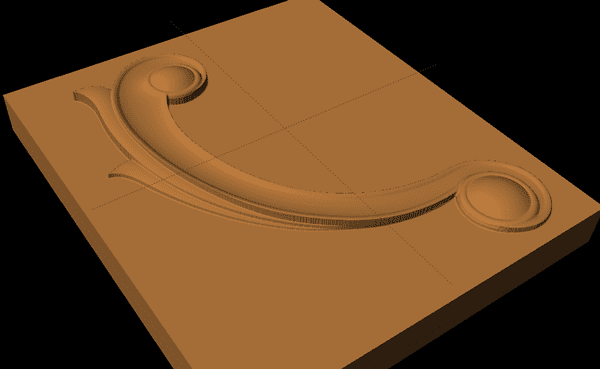
With this modeled, we can now make it into a pattern and place it on our leg project boards.
Time to upload and carve. I’ll need to carve 2 of each. Two for the left and two for the right.
A sharp chisel can make quick work of removing tabs cleanly without damaging your carved piece.
As the pieces are coming out, it is a good idea to lay them out to make sure they are fitting accurately.
Next, the 2 halves of the each of the legs will be glued together.
After the legs are glued together, they need to be sanded and routed before attaching the onlays. A drum sander made quick work of this.
These legs are being joined together in the middle with blocks that are tied together with a carved spindle. I did a dry fit with the block these were to be carved out of, to test the leg spacing.
Now, its time to design and carve the spindle and finial elements for this leg.
Both the spindle and finial are created using the CarveWright Rotary Jig and software.
The rotary projects carved flawlessly and, hardly, needed any sanding! I’m so impressed with that rotary jig every time I use it.
Wood pegs and glue seemed to be the best and strongest choice for assembling this entire leg assembly.
Measuring everything very carefully, was critical to putting this together. I recommend getting a doweling jig.
Our meticulous measuring paid off. Everything fit together perfectly.
Catching and cleaning up all the glue drips to keep the wood clean for staining.
We used a Minwax Red Chestnut stain that really brought out the character in the wood.
The next installment of this blog will be the final one and show the completion of the table.
Explore Project Categories
Customer Stories
News
Subscribe To Our Newsletters
Learning, projects, customer highlights, and promotions in your inbox!




